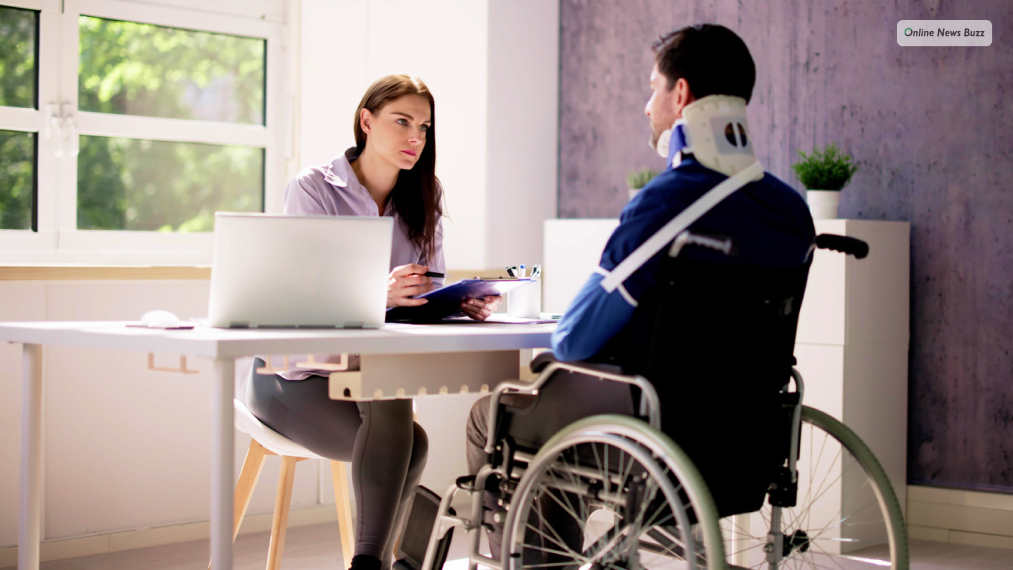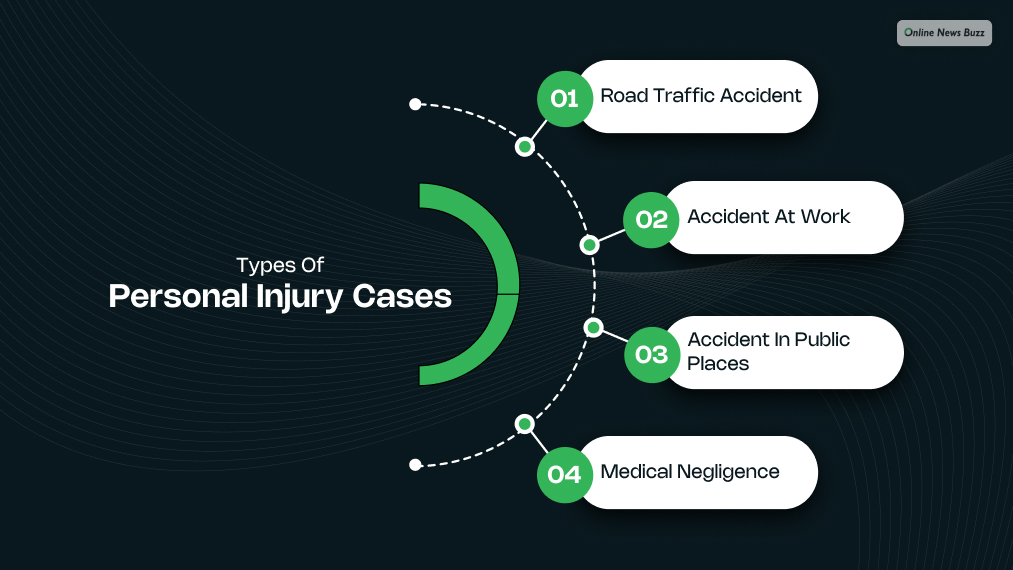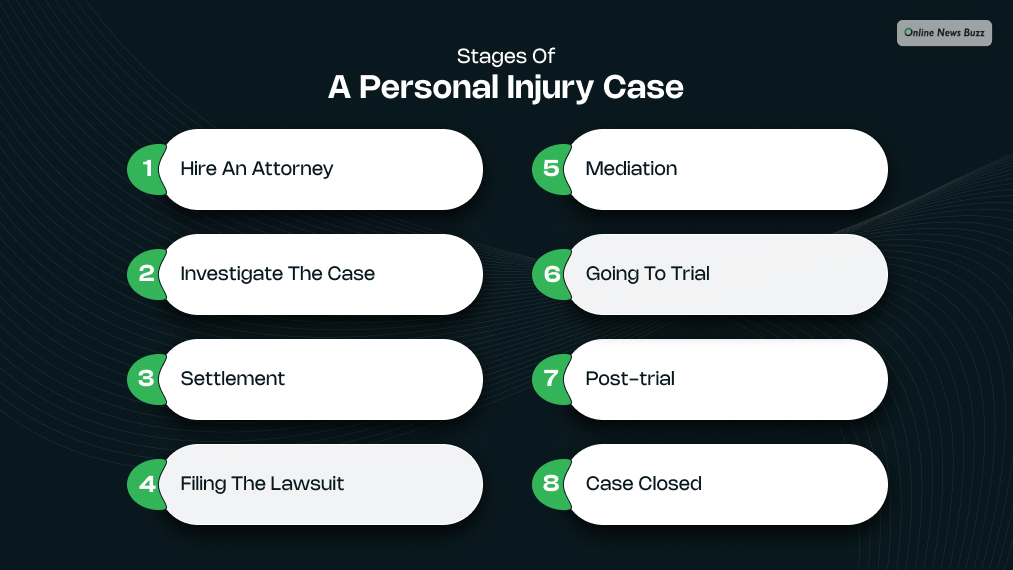
When someone gets injured in an accident, it is natural for them to think about what their legal rights and options are. A personal injury lawsuit provides financial compensation for the loss that a person has suffered. However, before you get there, you should know about what you are getting yourself into.
A lawsuit is something people are not familiar with. They do not get involved in one often. Because of this, whenever people get involved in an accident, they get frazzled. Firstly, it is the trauma of the injury that is there, and moreover, the personal injury case that they have to file.
What is a personal injury lawsuit?

Before we get to the personal injury case, let’s have a look at what is a lawsuit. By definition given in Collins dictionary, “a lawsuit is a case in a court of law involving a claim, complaint,etc., by one party against another.”
A personal injury lawsuit is a form of legal dispute that happens when someone suffers from an injury or an accident, and another person or entity is legally responsible for that injury. The purpose of this lawsuit is to recover compensation for the damage that the accident has caused, including pain and suffering, lost wages, and medical expenses.
To win this lawsuit, you or the lawyer has to prove that the defendant is responsible for the injuries. This means you have to prove that the defendant was negligent or somehow at fault for the injuries or the accident that happened.
Once you have established the liability, the court will decide how much money you will receive for the damages caused if you have not already settled.
Pain and Suffering Defined :
There are two main types of pain and suffering. The first is physical pain and suffering, which relates to physical injuries or illnesses that a person endured. The second is mental pain and suffering, which refers to emotional trauma or turmoil that a person underwent.
Definitions of pain and suffering tend to be vague. When the term is used in personal injury claims, the claimant must prove that suffering occurred and that the suffering was caused by the defendant.
To claim that physical pain and suffering occurred, a claimant would need documentation of their physical injuries. The full suffering includes all of the discomfort and pain that has been endured, along with any effects the claimant is likely to experience in the future.
To claim that mental pain and suffering occurred, a claimant needs documentation of their mental state. Mental pain might include:
- Post-traumatic stress
- Depression
- Anxiety and shock
- Anger
- Humiliation
- Any emotional distress and mental anguish
- Fear
All negative emotions that a plaintiff has suffered due to an injury or a defendant’s negligence are considered to be mental pain and suffering.
Documents Needed for Proof :
No matter the circumstances, you will need to gather a great deal of documentation to prove that pain and suffering occurred:
- Receipts for prescriptions
- Official medical reports
- Receipts for over-the-counter medications
- Relevant medical bills
- Proof of time lost from work or school
- A detailed log of all missed activities, pain, and medical treatment
- Injury photos
Calculating Pain and Suffering :
There is no standard algorithm to calculate pain and suffering. Different insurance companies will calculate it in different ways. However, there are a few standard methods.
The multiplier method is used when a company multiplies a person’s total medical bills by a number ranging from 1 to 5. 1 is for minor injuries, while 5 is for more severe injuries. This is the amount of compensation the plaintiff receives.
The per diem method is used when a company uses formulas based around the daily suffering a person experiences. A person who was greatly inhibited in their daily function would gather an estimate of all of the activities they cannot do. They would then calculate a cost of compensation for each day. This figure would be multiplied by the amount of days the person had been injured.
Insurance companies might also estimate a generalized cost.
Types of personal injury cases

Various kinds of cases fall under personal injury cases. However, there are a few broad categories that work like an umbrella and hold these cases under those. Let’s have a look at those broad categories and what cases fall under those.
Road traffic accident
Road traffic accidents happen when any kind of injury or accident on the road happens or when pedestrians get involved in an accident with another person on the road. Some of these claims are:
- School bus accidents
- Car accident
- Taxi accident
- Rear end collisions
- Pedestrian accidents
- Side impact accidents
- Passenger accidents
- Accidents caused by poorly maintained roads
- Motorway accidents
- Bicycle accidents
- Motorcycle accidents
- Bus accidents
- Luas accidents
- Hit-and-run cases
Accident at work
Accident at work refers to any injury or accident that happened in a workplace due to the negligence of the employer or other employees. Some of the few accidents that are commonly experienced at work are:
- Building site accident
- Warehouse accident
- Machinery accident
- Manual handling injuries
- Farm accidents
- Back injuries at work
- Forklift accidents
- Pallet accidents
- Safety and health breach claims
- Faulty or lack of protective equipment
- Accidents because of poor lighting
- Repetitive strain injuries
- Ladder accidents
Accident in public places
Public place accidents are those injuries or accidents that happen in a public place because of the negligence of a person responsible for maintaining a safe environment. Some of the common accident claims are:
- Accidents by spillages
- Accidents caused in a supermarket
- Accident caused by a petrol station
- Car park accidents
- Food poisoning caused by a restaurant
- Claims against a local authority or council for causing an accident in a public place
- Accidents in a hotel
- Falls, trips, and slips in public places
Medical negligence
Medical negligence means a situation where a person is injured, or their present medical condition worsens due to the standard of care they received from a medical professional. It could be about injuries that could have been easily avoided with a little precaution from the medical practitioner. Some of the common claims are:
- Prescription or medical error claims
- Cosmetic surgery claims
- Wrong site surgical error claims
- Misdiagnosis claims
- Retained surgical instrument claims
- Fracture misdiagnosis claims
- General surgery
Stages of a personal injury case

The steps mentioned below outline the different stages of a personal injury case, beginning with the consultation with an attorney member and ending with the case resolution.
Hire an attorney
Having the right attorney by your side is essential. Before you go on and hire them, talk to them about their experience and success rate. Discuss their policy about communicating with clients. Talk to your friends and family and ask about their history if they have recommended that attorney to you.
Most personal injury attorneys are paid contingently, meaning no fees are involved if they do not succeed. And if you end up receiving monetary compensation, then you have to pay a certain percentage to your attorney. So, make sure you choose the right one.
Investigate the case
The attorney will research the case to understand how you were injured and evaluate the extent of your injury, the damages it has caused you, and how much you were charged because of that.
After that, they will contact the insurance company and the attorney representing the party who injured you. They will keep you aware of the negotiations and let you know of every little development in the case.
Settlement
Various personal injury cases get resolved before even filing the lawsuit. The attorney negotiates with the insurance company of the at-fault party. In most of the cases, the insurance company makes a settlement offer, and the attorney presents you with what they are willing to offer.
Even though the advice from your attorney is very important, you will make the last call. You must decide whether you want to settle with the given offer or take the case to court.
Filing the lawsuit
If there is no settlement, then the attorney will file the lawsuit. After that, the judge will set a deadline for every case phase. The entire process could take months, or it can even stretch up to a year. It depends on how complex your case is.
- Complain and answer phase – The complaint is the document that holds all the information of the case, every detail about the injury, and how extensive your damages are. The defendant has to answer the complaint within 30 days.
- Discovery phase – During this time, both parties gather evidence, information, and documents about the case from third parties. They can also get permission for a deposition, where they will ask witnesses questions that are “on record.”
- Motions phase – A lawsuit can be filed before or after the discovery stage is complete. That is when the court can take some action. The other parties may even ask to dismiss the few motions. They get 28 days to give a written response in opposition to the notion filed.
Mediation
Mediation is another form of dispute resolution that both parties can request at any time. It includes both parties, their attorneys, and a mediator, who is neutral and acts like a referee between both parties.
During mediation, both parties present their case and try to settle the case with the help of the mediator. Mediators are non-binding, and any party can reject or accept the matter at any time.
Going to trial
When the case goes to trial, teh respective attorneys present their side to the jury or the judge, and then the defendant puts on their case. After both sides place their arguments, the jury or the judge determines whether the defendant is legally responsible for your injuries and the accident compensation claim is feasible or not.
The personal injury case trial goes through six phases:
- Selection of the jury
- Opening statements
- Testimony from witnesses and cross-examination
- Closing arguments
- Instruction from juries
- Jury deliberation and verdict
Post-trial
Sometimes, the case is not over, even after you have got the jury to give you a verdict in your favor. The defense could try to appeal and request a higher court to reconsider the ruling. Even if no appeal is made, the monetary award distribution could take some time.
Before you, if there is any company that has a legal claim over the amount, it needs to be paid off. After that, you get the money to keep. This is when the personal injury case is over.
Case Closed
The recovery process of a personal injury case is complex. Make sure you choose an attorney who has enough experience handling cases similar to yours and also a good track record proving their success.
Because the lawsuit can continue for months to years, you must have a good rapport with your lawyer. You just get one shot at this to get compensated for the damages and injuries you were caused.
Personal injury attorneys are best suited to handle your personal injury claim. They know the ins and outs of pain and suffering, and they can help you gather the necessary documentation to win your case.
Read Also :




























